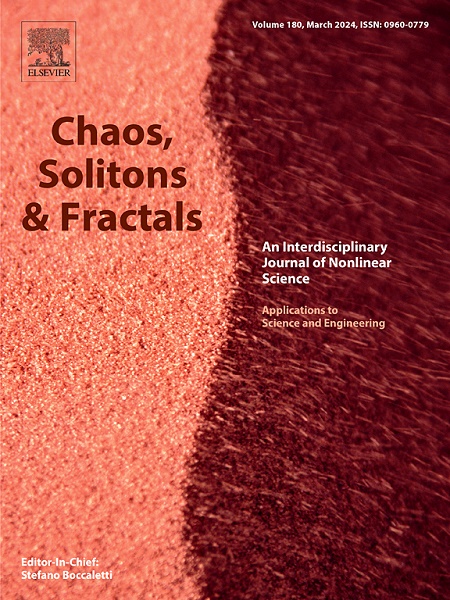Isochronous and period-doubling diagrams for symplectic maps of the plane
IF 5.3
1区 数学
Q1 MATHEMATICS, INTERDISCIPLINARY APPLICATIONS
引用次数: 0
Abstract
Symplectic mappings of the plane serve as key models for exploring the fundamental nature of complex behavior in nonlinear systems. Central to this exploration is the effective visualization of stability regimes, which enables the interpretation of how systems evolve under varying conditions. While the area-preserving quadratic Hénon map has received significant theoretical attention, a comprehensive description of its mixed parameter-space dynamics remain lacking. This limitation arises from early attempts to reduce the full two-dimensional phase space to a one-dimensional projection, a simplification that resulted in the loss of important dynamical features. Consequently, there is a clear need for a more thorough understanding of the underlying qualitative aspects.
This paper aims to address this gap by revisiting the foundational concepts of reversibility and associated symmetries, first explored in the early works of G.D. Birkhoff. We extend the original framework proposed by Hénon by adding a period-doubling diagram to his isochronous diagram, which allows to represents the system’s bifurcations and the groups of symmetric periodic orbits that emerge in typical bifurcations of the fixed point. A qualitative and quantitative explanation of the main features of the region of parameters with bounded motion is provided, along with the application of this technique to other symplectic mappings, including cases of multiple reversibility. Modern chaos indicators, such as the Reversibility Error Method (REM) and the Generalized Alignment Index (GALI), are employed to distinguish between various dynamical regimes in the mixed space of variables and parameters. These tools prove effective in differentiating regular and chaotic dynamics, as well as in identifying twistless orbits and their associated bifurcations. Additionally, we discuss the application of these methods to real-world problems, such as visualizing dynamic aperture in accelerator physics, where our findings have direct relevance.
平面辛映射的等时和倍周期图
平面的辛映射是探索非线性系统复杂行为的基本性质的关键模型。这一探索的核心是稳定制度的有效可视化,这使得解释系统如何在不同条件下进化。虽然保持面积的二次hsamunn映射在理论上受到了很大的关注,但对其混合参数空间动力学的全面描述仍然缺乏。这种限制源于早期试图将完整的二维相空间减少到一维投影,这种简化导致了重要动力学特征的损失。因此,显然需要更彻底地了解潜在的定性方面。
本文章由计算机程序翻译,如有差异,请以英文原文为准。
求助全文
约1分钟内获得全文
求助全文
来源期刊

Chaos Solitons & Fractals
物理-数学跨学科应用
CiteScore
13.20
自引率
10.30%
发文量
1087
审稿时长
9 months
期刊介绍:
Chaos, Solitons & Fractals strives to establish itself as a premier journal in the interdisciplinary realm of Nonlinear Science, Non-equilibrium, and Complex Phenomena. It welcomes submissions covering a broad spectrum of topics within this field, including dynamics, non-equilibrium processes in physics, chemistry, and geophysics, complex matter and networks, mathematical models, computational biology, applications to quantum and mesoscopic phenomena, fluctuations and random processes, self-organization, and social phenomena.
 求助内容:
求助内容: 应助结果提醒方式:
应助结果提醒方式:


